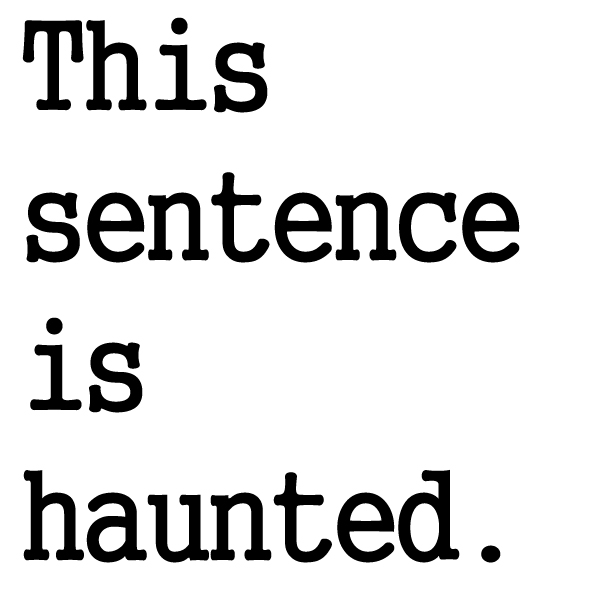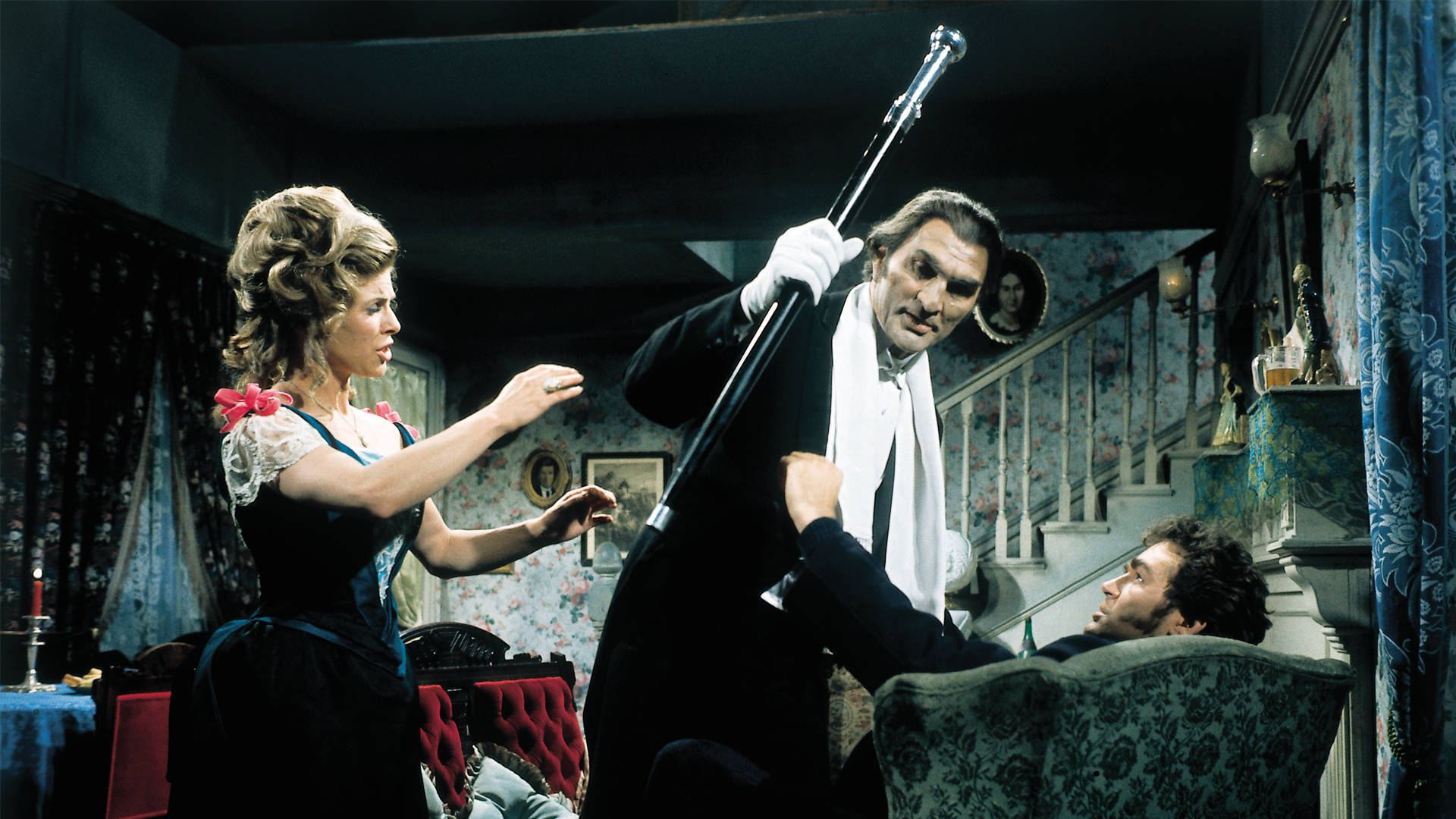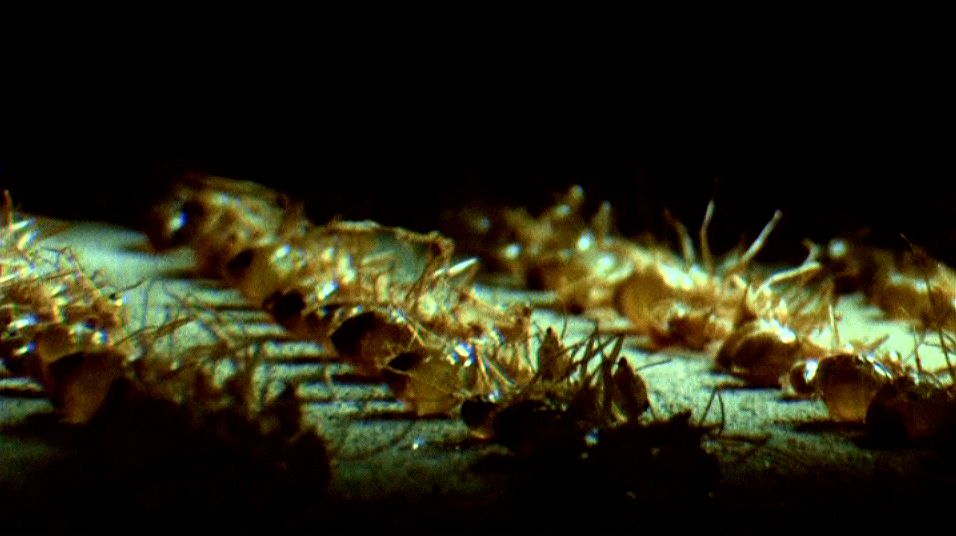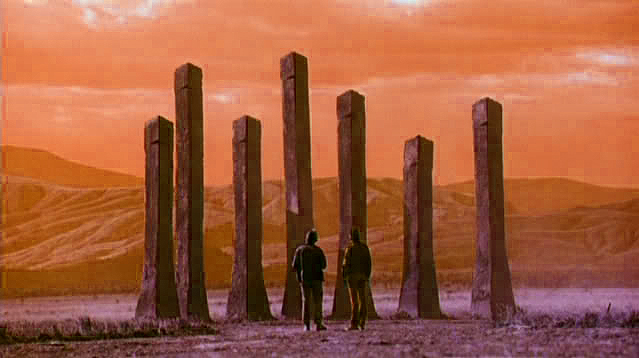First things first, PHASE IV is no where near as hysterical and violent as that poster might suggest (although it is a cool poster). Rather, the film evokes dread more than outright terror, and fear more than horror. The movie opens with a voiceover from Lesko (played by Michael Murphy, who's been in a million things) musing about peculiar interstellar phenomena (shown via some stunning animation that looks a bit like it might have come from an old science-for-schools program but is still very pretty). No one's sure what this phenomena could mean, but one thing's for sure - its effect was completely unexpected.
It's affected ants, you see. And not just one type, but ALL species. Dr Ernest Hobbs (English actor Nigel Davenport), a scientist with a real mad-on for ants, cottons on to this and heads out to the Arizona desert to study the insects, accompanied by cryptozoologist and communications expert Lesko. Hobbs has noticed that ants have started working together to cleanse the area of their natural predators, and wants to find out why. It doesn't take too long before the insects make their intelligence known as they close-in on Hobbs and Lesko, who've set up a small dome in which to conduct their research.
PHASE IV is a relatively sparse film. For the most part, we're either confined to the claustrophobic interior of the research dome, or treated to the vast expanse of the surrounding desert. There is no real in-between, save for a brief visit to a small farm, and a deserted settlement (the appropriately 'abandoned-hope-and-failed-glories' named Paradise City) but that's about it for locations. There isn't too much dialogue, and what there is is to-the-point. It's also probably fair to say that the majority of the film's remarkably short runtime (less than and hour and half) is taken up by footage of the ants themselves, which is no bad thing.
These bits are brilliantly realised, and help alleviate any chance of laughing at the inherent absurdity of 'super ants' - there's something creepy about watching different species 'conversing' (and with tiny weird symbols on their heads!), not to mention shots of stuff like an ant dutifully making rows of its dead brethren in a large chamber (above). Extreme close-ups of the bloated and wasp-like (because she actually is a wasp, fact fans!) Queen make for uncomfortable and squirm-inducing viewing as she squeezes out yet another egg, to add to a rapidly expanding pile of newborn ants.
Saul Bass, Hitchcock's title designer, directs the 'human' parts with a good eye for weird visuals (plenty of solar eclipses and bug-eye vision) that are rendered surreal by their use, but what really sells this film for me, more than his direction or Ken Middleham's insect sequences, is the sound design. Electronic bleeps, bips and drones punctuate long stretches of ants wandering their subterranean hive, with a high-pitched chittering/shrieking/clacking noise soundtracking their attacks and time-lapse devouring of other creatures. I was reminded of one of my other favourite 70s films THE MUTATIONS (aka THE FREAKMAKER), in which copious use is made of time-lapse to show plants growing/dying, accompanied by weird, atmospheric electronic music. In that film, Donald Pleasance plays a scientist as unhinged as Hobbs, but one obsessed with creating human/plant hybrids. It's far more 'b-movie' than PHASE IV ends up being, but not to its detriment.
Once Hobbs is bitten, and poisoned, by an ant, he starts to unravel at an alarming rate, as his inherent obsession builds to fever pitch. He wants to utterly destroy the ants, whereas Lesko, acting with a rational mind, seeks to understand - and even communicate with - them. There are echoes of H. G. Wells' WAR OF THE WORLDS in how the scientists are themselves being studied by "intelligences greater than man's and yet as mortal as his own" and that these minds "slowly and surely drew their plans against us". This is the film's strongest theme, and is well-realised. PHASE IV is a bit like a chocolate-covered muesli bar, in that on the surface there's just the one thing to savour, but underneath there's more going on that demands some chewing over. That's not a bad comparison, given that I just thought of it cos I'm eating a chocolate-covered muesli bar.
Apart from the visuals, there are some very strong scenes in PHASE IV - and in one of the most chilling, it's primarily through a mixture of darkly humorous irony and human error that the only other featured characters meet their demise, as they stumble through thickening clouds of poison designed to kill the ants....who only return, stronger and more resilient than before. As for weak points, Davenport's portrayal of Hobb's burgeoning insanity is one of the only ones, as it edges over into the hysteria promised by the poster. Another weak aspect is Kendra, a survivor of a previous ant attack, who becomes little more than a plot device. However, having said that, her implication in the ants' plan is both chilling and weirdly optimistic - come the end of the film, humans may well still have a place on this planet, but not in the way we would hope.




.jpg)
No comments:
Post a Comment